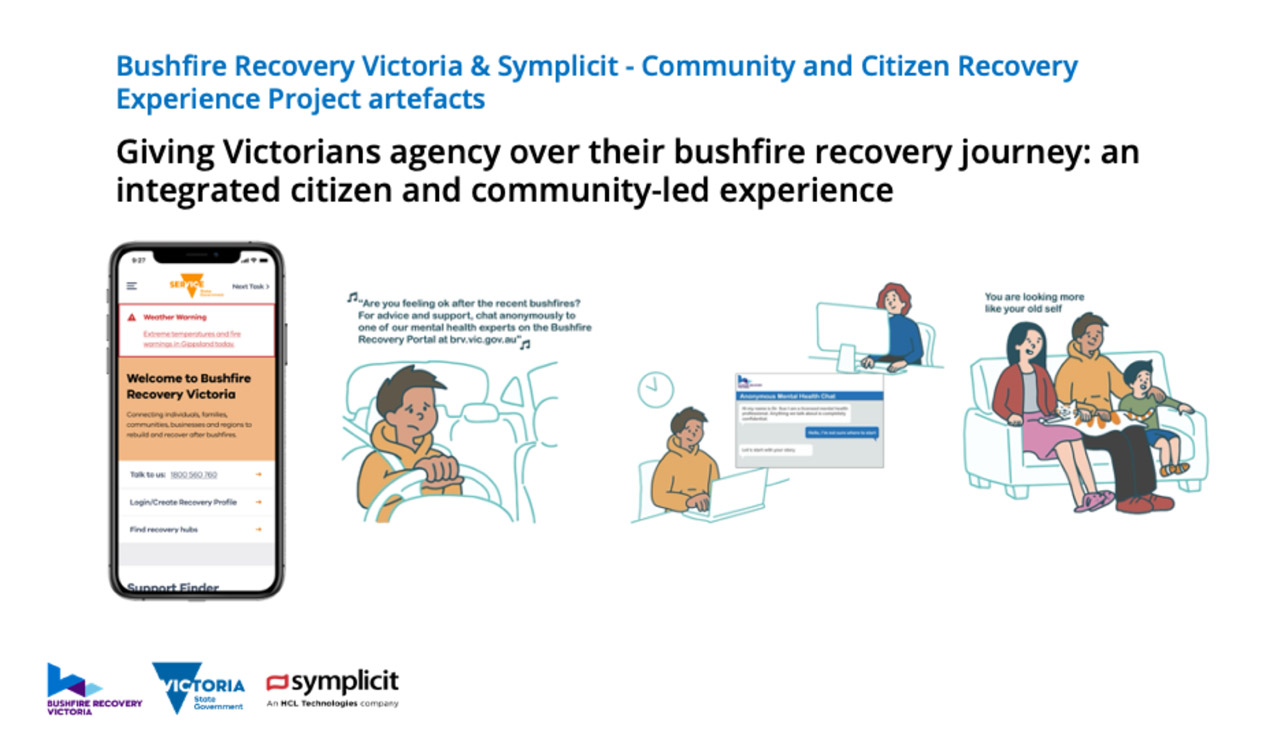The design process followed the Victorian Government human-centred design (HCD) method of Align, Discover, Define, Develop and Deliver (double diamond), outlined in the activities below.
Align and Discover activities:
We undertook a literature review and leveraged our own previous disaster research, as well as research from BRV and other Government agencies, to empathise and identify gaps in the existing data. We met with community members to validate assumptions and fill gaps in the data surrounding citizen experience pre- and post-disaster.
Define:
We created Experience Maps to demonstrate people’s journeys from life before the disaster through to early, mid- and longer-term recovery. The maps showed the support needs and pain points of citizens, as well as wider systemic issues for coordinating support agencies and organisations. We also undertook a top task analysis with front line staff to understand the priority services and features that would benefit citizens.
Develop:
After gaining insight into the current service ecosystem, we created a future vision for recovery services that would serve the unique needs of four behavioural archetypes: the ‘inundated survivor’, the ‘self-isolator’, the ‘collected recoverer’ and the ‘compassionate volunteer’.
Deliver:
We co-designed a minimum viable product (MVP) Citizen and Community Recovery Portal with BRV and Services Victoria where people could manage all the services in one place. We designed a Future Community and Citizen Recovery Platform proof-of-concept (CCR Platform) for the next generation of disaster recovery coordination and a three-year roadmap to build and implement the new platform.
Our work achieved BRVs goal of designing a citizen-centred solution, that helps to reduce the trauma of people telling their story over and over, and that enables the community and citizens to access the available services when they need them.










